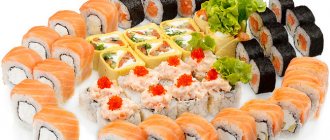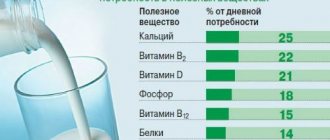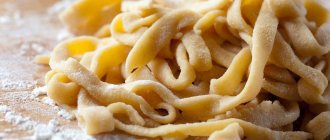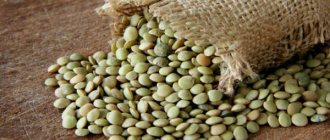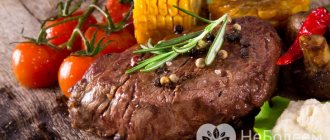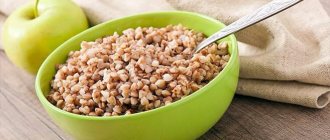© ildi_papp — depositphotos.com
Share:
Vietnam and Thailand are considered the birthplace of the cereal. From there, about 6 thousand years ago, rice spread throughout Asia and India, and then came to Europe. White rice was called in many different ways in ancient times: “gift of the gods”, “healing grain”, “white gold”. Hippocrates prepared a nutritious mixture from rice and honey for the ancient Olympians, Nero considered rice a remedy for all diseases, and eastern merchants made fortunes from exporting cereals.
Rice has become part of the culture of many peoples and remains the most popular food on the planet. Today we will talk about the properties of cereal, discuss the benefits and harm to the body.
Types of rice
There are 20 types of rice in the world, and to answer the question of which is healthier, let’s evaluate the cereal according to a number of criteria:
- Shape and size . Long-grain, medium-grain, short-grain – these are the labels we see on packs of rice in the supermarket. The longest grains reach 8 millimeters, and the round size does not exceed five.
- Processing method. Unpolished, polished, steamed. Brown (brown or unprocessed rice) is grains in a shell. By grinding the shell is removed and white rice is obtained. Steamed is prepared from brown grain; when the grain is steamed, a translucent, golden-colored grain is obtained, which is ground.
- Color. Rice comes in white, brown, yellow, red and even black.
We will not dwell on the description of rice varieties, we will only recall the names of the most popular: basmati, arborio, aquatica, jasmine, camolino, devzira, Valencia. Each name hides an interesting history of the product, its features and uses in cooking and medicine. But we will tell you about the properties of white rice, its composition and characteristics.
Diet variety
The low level of AFFA in rice has led to the development of numerous dietary regimens based on this product. The result of some of these diets can be a weight loss of 8-10 kg in 7 days.
Rice diet
It is a soft or hard monocomponent diet. If you are on a strict diet, you need to pour a glass of rice cereal with 2 glasses of chilled boiled water every evening in the evening, mix thoroughly and leave overnight. In the morning you should get a mixture similar to porridge; it should be divided into 5 equal parts and consumed throughout the day, and under no circumstances should you add sugar, salt, pepper and other spices.
Please note: For a mild mono-diet, various ingredients (fruits, stewed or fresh vegetables, Greek salad) can be added to the resulting porridge prepared as described above.
It is recommended to adhere to such diets for no more than 5 days, as they are very harsh. It is also important not to forget to maintain water balance in the body by drinking at least 2 liters of water daily.
Rice and buckwheat way to lose weight
This diet is considered an easier option for body shaping, and its level of effectiveness is not inferior to the method described above.
Duration of the diet – 5 days, daily menu:
- breakfast: 2 fruits;
- lunch: rice porridge with a mixture of nuts;
- afternoon snack: vegetable salad;
- dinner: buckwheat porridge with chicken breast.
As a snack, a portion of low-fat cottage cheese without additives is allowed.
Video
Rice diet with honey
This is another type of monocomponent diet, including a real storehouse of useful vitamins in the form of honey.
Attention! Not recommended if you have an allergic reaction to bee products.
Duration of the diet: 5-6 days, no more. The nutritional system for this diet includes only 2 components:
- half a kilogram of rice porridge, which must be consumed in 5 meals throughout the day;
- 250 ml of lemon-honey drink, which is divided into 3 parts and consumed in 3 doses.
Adding other ingredients while following the diet is prohibited.
Video
Geisha diet
Is as follows:
- for breakfast: half a liter of green tea with 2 tbsp. l. milk;
- for lunch: half a liter of green tea and 250 g of boiled brown rice;
- for dinner: the same as for lunch.
The duration of such a diet can vary from 3 to 7-8 days, during which not only the extra pounds will go away, but the condition of the skin will also improve, facial wrinkles will disappear and the general condition of the body will normalize.
Composition of white rice
If you eat 100 g of boiled white rice, you will get a third of your daily carbohydrate intake. In terms of the content of complex carbohydrates, this cereal has few competitors: 100 g contains almost 79% carbohydrate compounds.
Calories, nutritional supplements, vitamins
Let's also discuss the calorie content of rice: in a dry product - from 300 to 370 kcal (depending on the variety). But we, as consumers, are interested in an already processed product, and here the indicators are as follows: 100 g of boiled cereal contains from 100 to 120 kcal.
Anyone who monitors their diet and controls food intake will find this information useful:
| Nutritional value of cooked white rice (100g) | |
| Calorie content | 110-120 kcal |
| Squirrels | 2.2 g |
| Fats | 0.5 g |
| Carbohydrates | 25 g |
As for the chemical composition of cereals, it will not disappoint adherents of a healthy diet: phosphorus, potassium, magnesium, chlorine, iron, iodine, selenium - this is not a complete list of elements.
Rice is rich in vitamins and contains:
- complex B, which helps the nervous system function;
- vitamin E, a powerful antioxidant and activator of protein synthesis in the body;
- vitamin PP, or nicotinic acid, which restores lipid metabolism.
Important to know: the cereal does not contain gluten (vegetable protein). Therefore, rice is suitable for children and adults suffering from allergic reactions.
The list of vitamins and elements in the composition gives a general understanding of the benefits of the product: phosphorus activates mental activity, iron and potassium have a positive effect on the functioning of the cardiovascular system, vitamin E helps accelerate metabolic processes, etc. We will tell you in more detail about the beneficial properties and limitations further.
Attention! When converted from brown rice, white milled rice loses up to 85% of its beneficial substances: vitamins, fiber, and microelements. The value of cereals drops especially sharply due to the loss of fat-soluble vitamins (A, E).
Rice on the menu for diabetics
The inclusion of rice in the menu for diabetics deserves special attention. The product has a relatively high glycemic index (70). In addition, the process of digesting rice, due to its ability to absorb liquid, slows down the digestion process. Experts recommend that patients with diabetes limit their consumption of polished white rice. The best option would be to add a small amount of this grain to vegetable dishes or salads or completely replace it with brown and steamed varieties of grain.
But there are exceptions: for example, unpolished long-grain basmati rice contains about 50 GI units and does not cause a sharp change in glucose levels. This species can be used sparingly for food without fear of health.
Comparing the calorie content of dishes
| Diet rice with chicken | Diet rice with vegetables and shrimp |
| Nutritional value per 100 g: Calories: 102 kcal. Proteins: 11 gr. Fats: 0.7 gr. Carbohydrates: 14.2 g. | Nutritional value per 100 g: Calories: 86 kcal. Proteins: 6 gr. Fats: 0.4 gr. Carbohydrates: 16 gr. |
Benefits of white rice
The rhythm of modern life and the changing food market force us to choose ingredients for our menu more carefully. We care about the health of our loved ones, we want to maintain our physical fitness, and reduce the risks of heart attacks, which young people are also susceptible to today. In this context, we will consider the use of white polished rice.
For weight loss
How effective is white rice for weight loss? Let us note the main factors that give the right to include rice in the menu of those losing weight: complex carbohydrates quickly fill you up, and the low calorie content helps you stay in shape.
We remember that 100 g of boiled rice contains only about 120 kcal. When creating a menu with a calorie content in the range from 1200 to 1800 kcal, you can include a side dish of rice or vegetable pilaf (150-200 g). But the final calorie content of dishes depends on the method of preparation and all other components. For example, a fried pork chop with a side dish of boiled rice will not help you lose weight. Experts recommend creating nutrition programs, choosing simple and healthy ways to process foods: baking, boiling, steaming.
Important! When preparing the grain (grinding and removing useful shells), white rice loses biologically active substances, which are especially valuable in a sports diet. In fact, it turns into a piece of starch. And to lose weight, it is better to replace it with healthier types of grains - brown or black rice.
Rice is included in several popular diets. However, remember that mono diets have limitations and are not for everyone. A nutritional program based only on boiled rice will give quick results, but the results may be short-lived.
Weight loss with white rice occurs not because of its beneficial properties, but because of the gross limitation of other substances in the diet: fats, protein, vitamins. Such experiments should be abandoned in case of any disturbances in the gastrointestinal tract or increased physical activity. For healthy people, fasting “rice” days and including properly prepared white rice in the diet will bring benefits and visible effects. Especially if you combine nutrition with walking, swimming, yoga or fitness.
For the prevention of diseases of the heart, nervous system, etc.
100 g of rice contains almost 300 mg of potassium, which gives reason to pay attention to the product for everyone who is susceptible to diseases of the cardiovascular system.
In addition to potassium, calcium and iron, which are useful for the functioning of the heart, rice has a unique property: it absorbs excess liquid and salt, which improves the condition of blood vessels, corrects kidney function, and relieves edema.
It is worth noting the positive effect of using rice for diseases of the nervous system: B vitamins, lecithin and tryptophan activate metabolic processes and strengthen the nerves.
The benefits of rice for the prevention of Alzheimer's disease have been proven: the combination of vitamins and amino acids keeps the nervous system in good shape, activates mental activity and slows down the development of senile dementia.
Please note that these benefits are relative. If the choice is between fried potatoes in lard and boiled white rice, then you should choose porridge. In all other cases, the benefits of eating steamed rice, brown or black, will be much higher!
© jehsomwang — depositphotos.com
For the work of the gastrointestinal tract
If you have stomach problems, you should introduce slimy porridges into your diet. One of them is rice. Boiled glutinous rice is useful for people with gastritis or ulcers: the porridge will create a soft membrane on the walls of the esophagus, protecting them from irritation.
In case of poisoning, stomach upset (including infectious diseases), a rice diet will help quickly normalize stools, cleanse the body of toxins, and restore intestinal microflora.
A cup of boiled rice with baked fish or lean meat will not only be a complete meal, but will also help cleanse the intestines. But remember the rules for preparing the product, try to correctly combine ingredients in dishes and not overeat.
Beneficial features
Rice is a storehouse of useful vitamins and microelements that are required for the body to function properly. Moreover, any type of cereal has a positive effect on it. Brown rice is rich in micronutrients and fiber, which make it healthy as it cleanses the body of accumulated toxins. Possessing a rich vitamin and mineral composition, as well as low calorie content compared to white, it has become in demand among people who watch their diet.
Due to the presence of complex carbohydrates, it perfectly saturates and fills with energy, preventing you from overeating. The high content of vitamins B and PP help relieve mental and physical stress. The cereal contains sufficient amounts of calcium, sodium, phosphorus, magnesium, iron, selenium, copper and potassium, which is recommended for people with cardiovascular diseases.
Please note: rice does not contain gluten, so it is recommended for allergy sufferers.
Harm of white rice and contraindications for consumption
Along with its benefits, white polished rice can also cause harm to the body. Let's consider cases in which you should refrain from eating cereals:
- Obesity. For patients with a high degree of obesity, the diet is prepared by specialists. Independent attempts to lose weight using a rice diet can lead to serious hormonal imbalances, change bowel function and aggravate the problem. For this reason, white polished rice is included in the diet of obese patients only in doses recommended by the doctor.
- Problems with the gastrointestinal tract . Constipation cannot be cured with rice. On the contrary, the product's ability to absorb moisture will cause additional problems.
- Atherosclerosis and kidney disease . Excessive consumption of rice leads to the formation of kidney stones and blockage of blood vessels. Therefore, if you have problems with the kidneys and blood vessels, you should limit the consumption of high-calorie polished rice, reducing the portion size and excluding fatty pilafs, paellas, and side dishes with roast sauces from the menu.
Recipes for healthy eating
Meatballs with champignons and quinoa
- 14.9 g Protein
- 19.1 g Fat
- 2.7 g Carbohydrates
- 247.3 kcal
60 min.
- #mushrooms
- #dinner
- #roasting
- #breadcrumbs
- #parsley
- #vegetable oil
- #onion
- #cream
- #dinner
- #ground meat
- #Champignon
- #egg
Other recipes
conclusions
In the absence of contraindications, rice cereal can be considered a uniquely healthy product.
You should definitely include it in your diet at least once a week, especially since it is recommended by the Russian Ministry of Health. A variety of cooking options: rice with onions and butter, with meat (chicken, beef or pork), pies with rice, lazy cabbage rolls - will make each dish made from this cereal unique and special. The low calorie content of the product allows those who are on a diet to eat it without fear. An additional advantage of cereal is that there are many varieties of it, brought from different parts of the world, so it will not be difficult for every resident of the CIS to choose rice to suit their taste and budget.
